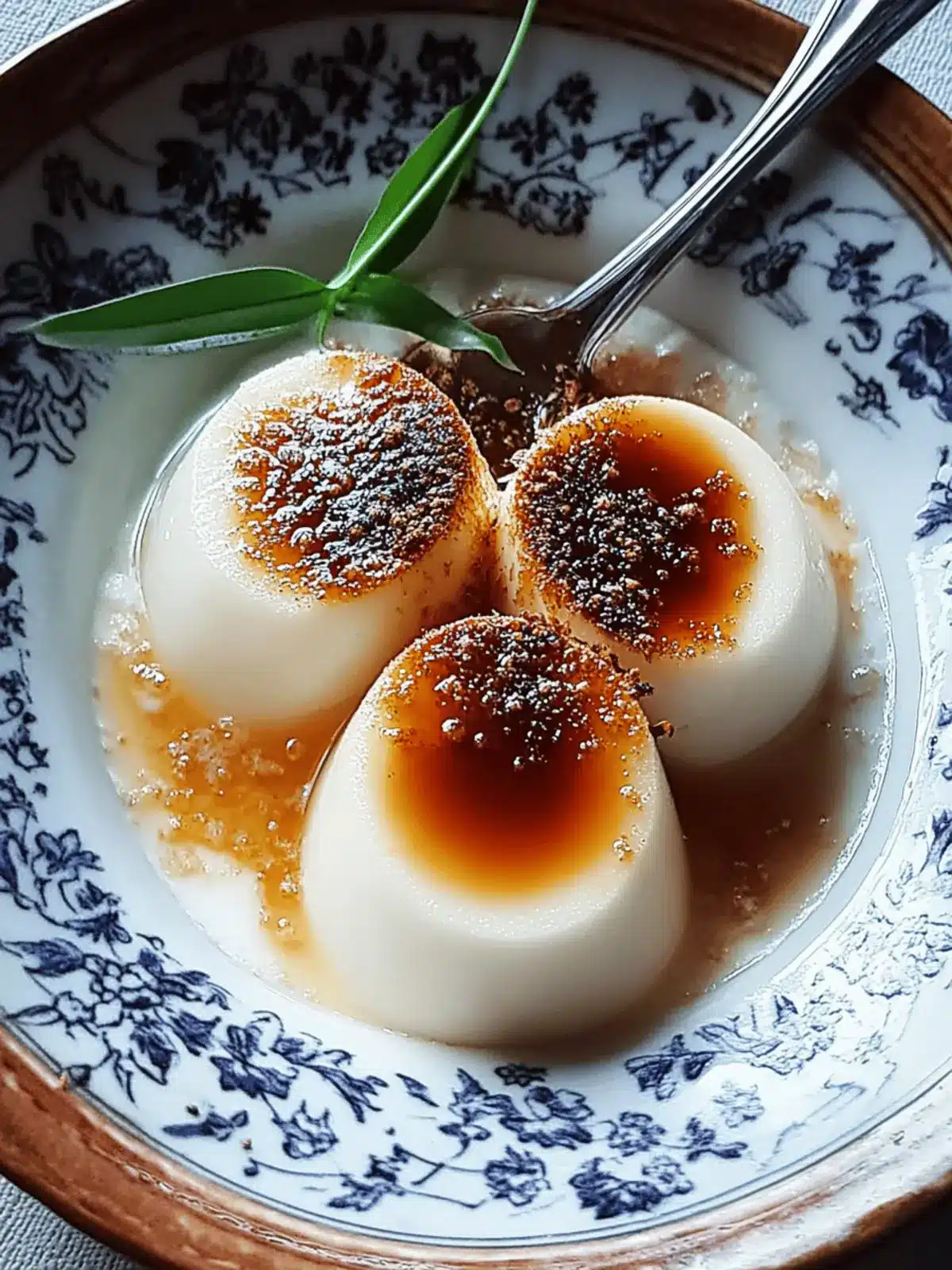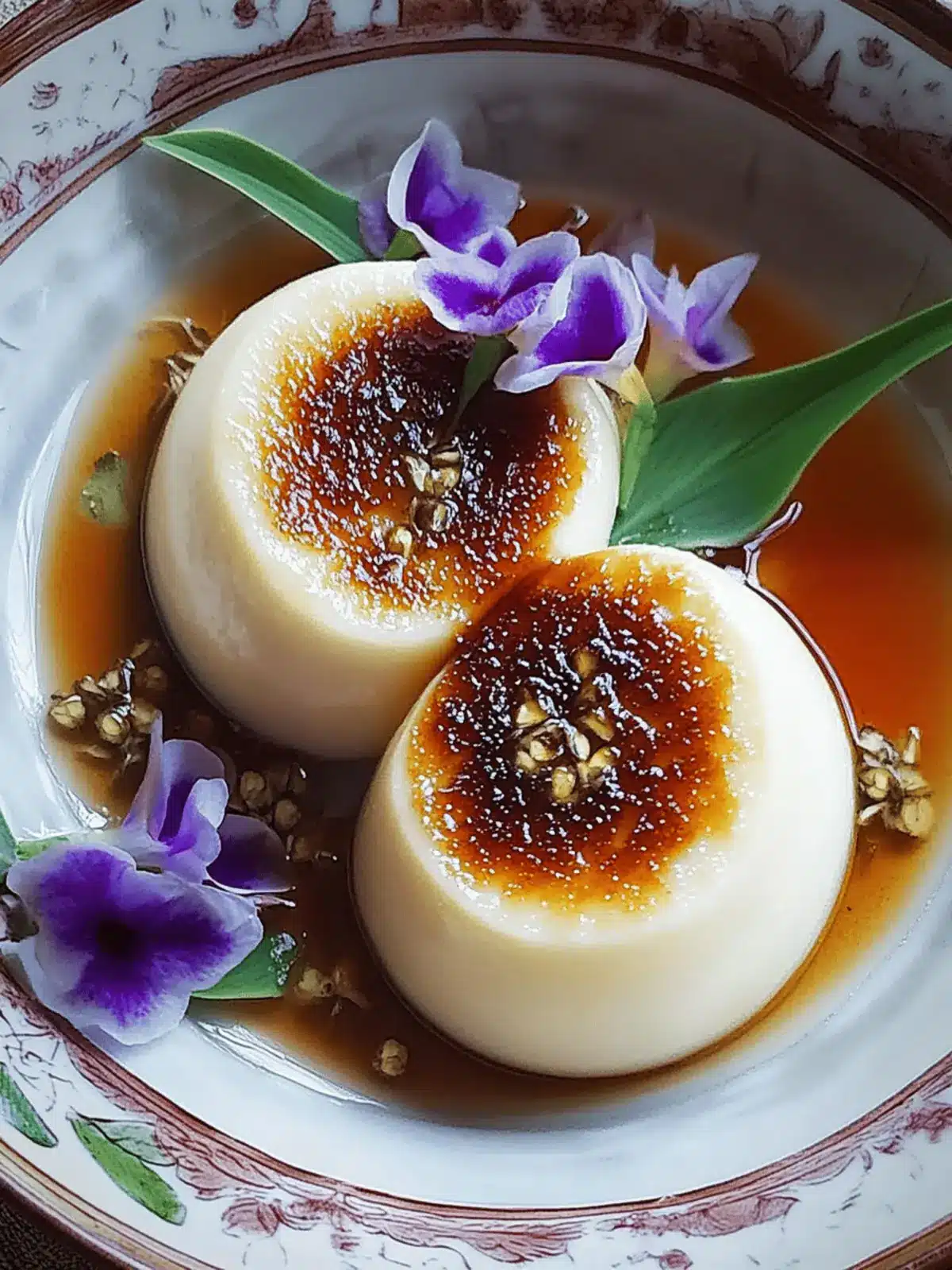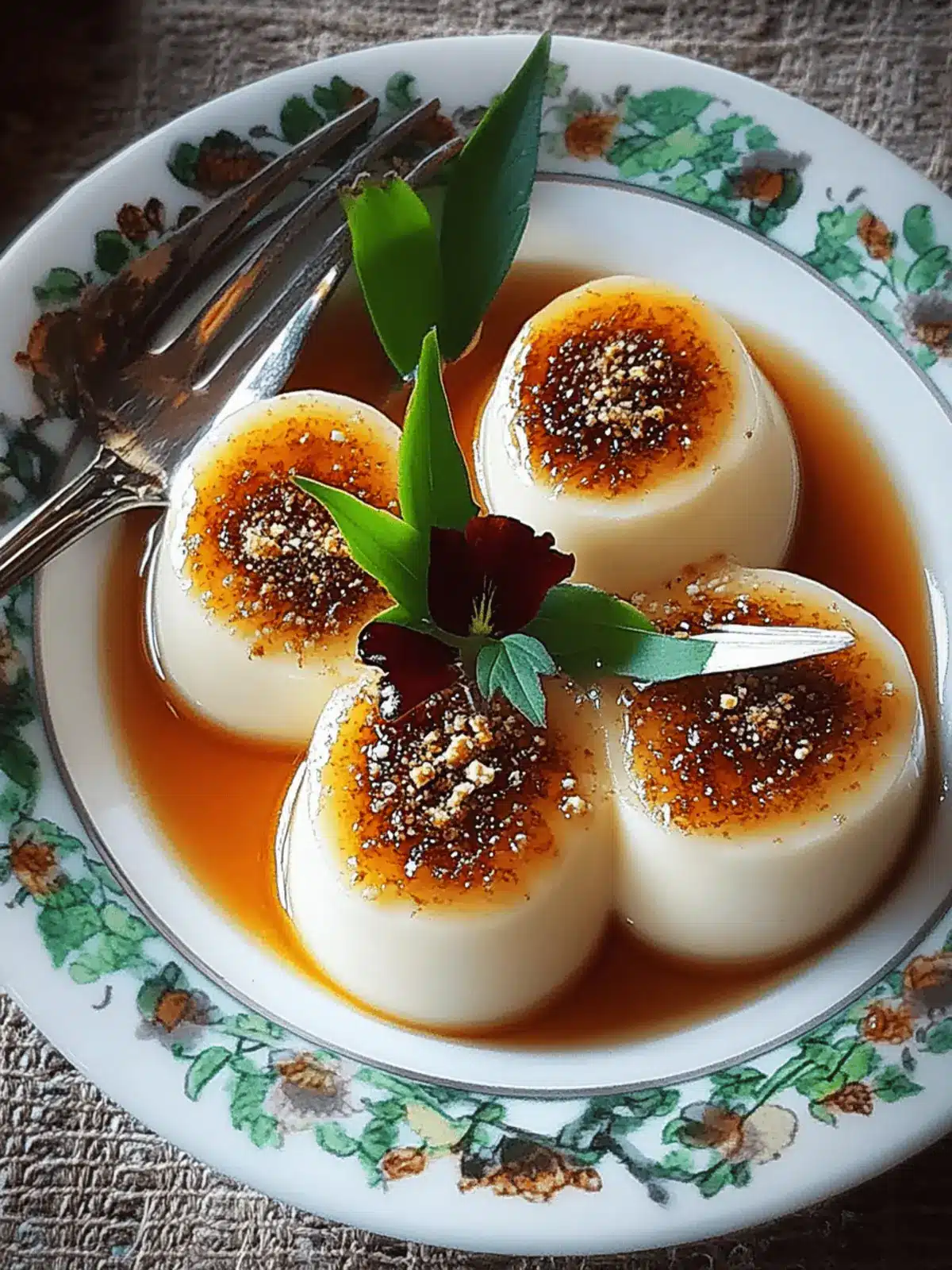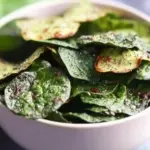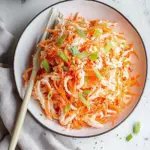There’s something mesmerizing about the delicate sweetness of Thai coconut custard, a treat that whisked me away on a fragrant tropical journey the first time I tried it. Picture this: silky, creamy custard infused with luscious coconut milk and the hint of caramel-like palm sugar, all coming together to create a dessert that’s as comforting as it is exotic.
This beginner-friendly recipe not only delivers a luxurious mouthfeel but also opens the door to exciting variations. Whether you choose to include aromatic pandan leaves for an extra touch or layer in some chewy sticky rice for added texture, each bite is a taste of Thailand. Trust me, whether served warm or chilled, this dish is bound to become a beloved staple in your kitchen. Join me in crafting this creamy delight, and let’s bring a slice of Southeast Asia to our dessert table!
Why is Thai Coconut Custard a Must-Try?
Irresistibly Creamy: The combination of coconut milk and palm sugar makes for a luscious, smooth texture that’s hard to resist.
Beginner-Friendly: With simple steps and minimal ingredients, even novice cooks can whip this up with ease.
Tropical Twist: Featuring unique flavors, it transports you straight to a sunny paradise—perfect for impressing guests!
Versatile Variations: Customize with pandan leaves for extra aroma or layer in sticky rice for delightful texture.
Crowd-Pleaser: Whether served at gatherings or a cozy night in, this dessert will surely win hearts and tastebuds alike.
Thai Coconut Custard Ingredients
For the Custard
• Eggs – Vital for providing structure, ensuring your custard sets perfectly.
• Coconut Milk – The star ingredient that brings rich, tropical creaminess to every bite.
• Palm Sugar – A natural sweetener with a caramel-like flavor; feel free to substitute brown sugar if needed.
• Salt – Just a pinch enhances the overall sweetness and balances flavors.
• Vanilla Extract – Adds a cozy warmth; don’t skip this for that comforting aroma!
Optional Add-Ins
• Pandan Leaves – Infuse your custard with a captivating herbal fragrance that beautifully complements the coconut flavor.
• Sticky Rice – Layering in this chewy treat adds delightful texture and heartiness to your dessert.
How to Make Thai Coconut Custard
-
Preheat the oven to 350°F (175°C). If you’re using pandan leaves, place them at the bottom of your baking dish for that enticing aroma.
-
Beat the eggs gently in a bowl until smooth. Try not to introduce too much air for a silky custard.
-
Combine the coconut milk, palm sugar, salt, and vanilla extract into the egg mixture. Mix well until everything is fully dissolved and uniform.
-
Strain the mixture through a fine sieve into a separate bowl. This will eliminate any lumps and ensure a smoother custard texture.
-
(Optional) Layer some soaked sticky rice in the baking dish now if you’d like to add an extra chewiness to your custard.
-
Create a water bath by placing the baking dish into a larger pan filled with hot water. This helps cook your custard evenly, preventing cracking.
-
Bake for 45 minutes to 1 hour. Check for doneness; the edges should be set while the center may still jiggle slightly when done.
-
Cool the custard at room temperature once it’s out of the oven. For an even firmer texture, chill in the refrigerator before serving.
Optional: Serve with fresh fruit or a sprinkle of toasted coconut for extra flair!
Exact quantities are listed in the recipe card below.
What to Serve with Thai Coconut Custard?
Let’s create a symphony of flavors and textures to accompany your delightful dessert and elevate your dining experience.
-
Fresh Mango Slices: Juicy and sweet, they provide a refreshing contrast to the creamy custard and enhance its tropical flavors wonderfully.
-
Toasted Coconut Flakes: Adding a crunchy texture, these flakes amplify the coconut essence without overwhelming the dish. Sprinkle them on top for visual appeal, too!
-
Passion Fruit Sauce: A tart, tangy drizzle over your custard brings a burst of fruity acidity that beautifully balances the sweetness of the dessert.
-
Coconut Sticky Rice: For a traditional touch, serve alongside this sweet treat. The chewy texture and slight sweetness harmonize perfectly with the custard.
-
Thai Iced Tea: What better way to wash down this decadent dessert than with a refreshing glass of sweetened, spiced iced tea? It adds a lovely aromatic note.
-
Grilled Pineapple: The caramelized exterior and juicy interior add a sumptuous smokiness, making every bite an adventure alongside the rich custard.
-
Chilled Lychee: These delightful fruits bring a burst of floral sweetness that complements the coconut flavor and creates a refreshing palate cleanser.
-
Lime Basil Sorbet: As a light, zesty complement, this sorbet provides a cooling contrast to the richness of the custard and leaves your palate craving more.
Thai Coconut Custard Variations
Feel free to get creative with your custard—each variation is a delightful way to enhance your dessert experience!
- Pandan Twist: Substitute the vanilla extract with pandan extract for an intensified herbal aroma that compliments the coconut beautifully.
- Brown Sugar Swap: Use brown sugar in place of palm sugar if you’re in a pinch; it will alter the flavor slightly but still be delicious.
- Fruit Fusion: Top your custard with fresh mango, ripe bananas, or berries for a refreshing burst of sweetness and color.
- Coconut Crunch: Sprinkle toasted coconut flakes on top before serving for an added layer of texture and a nutty flavor contrast.
- Creamy Layer: Add a layer of whipped coconut cream on top for a rich, airy finish that elevates the experience.
- Sticky Rice Delight: Incorporate a layer of sweetened sticky rice at the base for a chewy, hearty twist that adds warmth and comfort.
- Chocolate Drizzle: For chocolate lovers, drizzle melted dark chocolate over the custard before serving for a decadent touch.
- Chili Kick: Add a pinch of chili powder to the custard mixture for a subtle heat that beautifully elevates the sweetness.
Each of these variations brings its own flair to the classic Thai coconut custard, making it an even more enjoyable dessert. Enjoy experimenting!
Tips for the Best Thai Coconut Custard
Smooth Texture: Use a fine sieve to strain the custard mixture; this helps eliminate lumps for that silky-smooth finish.
Gentle Beating: Beat the eggs lightly without incorporating too much air. Over-beating can lead to a soufflé-like texture instead of creamy custard.
Precise Baking: Bake in a water bath to ensure even cooking and prevent cracking on the surface. It’s essential for achieving the perfect Thai coconut custard.
Chill Before Serving: Let the custard cool to room temperature before refrigerating. Chilling enhances its texture and allows flavors to meld beautifully.
Optional Ingredients: Feel free to get creative with pandan leaves and sticky rice! These add a unique twist and depth to your Thai coconut custard, making it even more delightful.
Make Ahead Options
Preparing your Thai Coconut Custard ahead of time is a fantastic way to save precious moments on busy days! You can make the custard mixture up to 24 hours in advance; simply follow the recipe up to the baking step. Store the strained mixture in an airtight container to keep it fresh. If you’re adding optional sticky rice, layer it in the baking dish beforehand to maintain its texture. When ready to indulge, pour the custard over the rice and proceed with the baking instructions. This ensures your Thai Coconut Custard is just as delicious and ready to impress your family or guests with minimal effort!
Storage Tips for Thai Coconut Custard
Fridge: Store your Thai Coconut Custard in an airtight container for up to 3 days. The chilling process enhances its texture and allows the flavors to deepen.
Freezer: For longer storage, freeze the custard for up to 2 months. Wrap it tightly in plastic wrap followed by aluminum foil to prevent freezer burn.
Reheating: If you prefer it warm, gently reheat the custard in the microwave in short intervals, stirring in between to ensure even warming without cooking further.
Serving: Enjoy it cold straight from the fridge or warmed, perhaps adorned with fresh fruits or toasted coconut for an irresistible treat!
Thai Coconut Custard Recipe FAQs
What type of coconut milk should I use?
Absolutely! When making Thai Coconut Custard, it’s best to use full-fat coconut milk for that creamy richness. Look for brands that contain just coconut and water without additives. If you prefer a lighter version, you can use light coconut milk, but this may result in a slightly less luxurious texture.
How should I store leftover Thai Coconut Custard?
Store your Thai Coconut Custard in an airtight container in the refrigerator for up to 3 days. Chilling enhances the flavors, making it even more enjoyable. If covered well, it maintains its silky texture. Just ensure it’s completely cool before sealing it to avoid condensation.
Can I freeze Thai Coconut Custard?
Yes, you can freeze Thai Coconut Custard! For optimal freshness, wrap the cooled custard tightly in plastic wrap, followed by aluminum foil, to prevent freezer burn. It can be stored in the freezer for up to 2 months. To enjoy it thawed, just move it to the refrigerator for a few hours before serving and gently reheat it if desired.
What if my custard cracks while baking?
If your custard cracks during baking, it may be due to temperature fluctuations. Make sure to bake in a water bath, as this keeps the temperature even. Also, avoid opening the oven door frequently, as sudden temperature changes can lead to cracking. If it does crack, don’t worry—a smooth topping like fruit or a sprinkle of toasted coconut can cover it beautifully!
Is Thai Coconut Custard gluten-free?
Yes! Thai Coconut Custard is naturally gluten-free, making it a delightful dessert for those with gluten sensitivities. Just be sure to check the labels on your palm sugar and any additional toppings to ensure they are also gluten-free, but the ingredients in the custard itself are safe.
Can I use different sweeteners in this recipe?
Very! While palm sugar is traditional for its unique flavor, you can substitute it with brown sugar if you don’t have palm sugar available. Keep in mind that this will slightly alter the taste, but it will still result in a delicious custard. You could also experiment with sweeteners like maple syrup for a different twist!
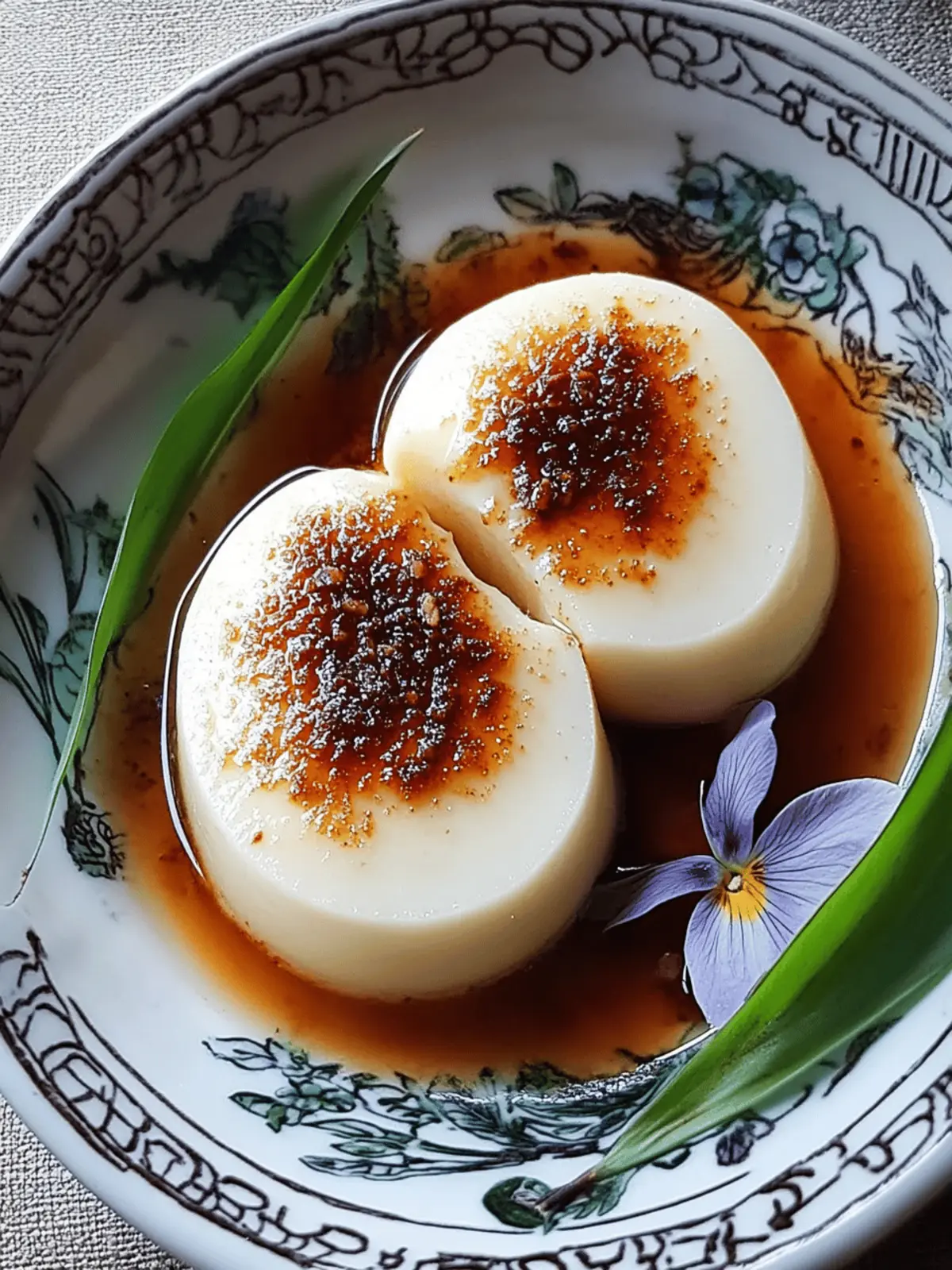
Thai Coconut Custard: Irresistibly Creamy & Easy to Make
Ingredients
Equipment
Method
- Preheat the oven to 350°F (175°C). If using pandan leaves, place them at the bottom of your baking dish.
- Beat the eggs gently in a bowl until smooth, avoiding too much air.
- Combine the coconut milk, palm sugar, salt, and vanilla extract into the egg mixture. Mix until fully dissolved.
- Strain the mixture through a fine sieve into a separate bowl to eliminate lumps.
- Layer soaked sticky rice in the baking dish if desired.
- Create a water bath by placing the baking dish into a larger pan filled with hot water.
- Bake for 45 minutes to 1 hour, checking for doneness.
- Cool the custard at room temperature, then chill in the refrigerator before serving.

